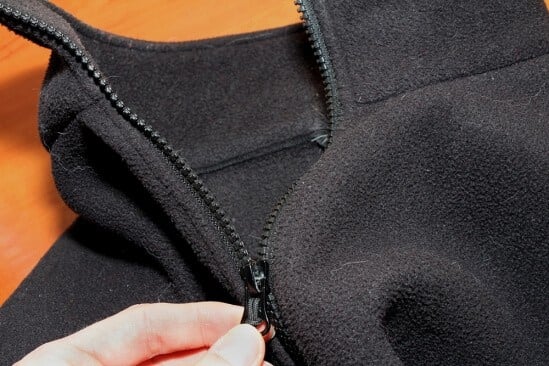One of the biggest contributors to ocean pollution may be hanging in your closet right now. That would be microfibers, infinitesimal strands of polyester found in the ubiquitous fleece jackets we all know and love.
A type of microplastic — similar to the vilified and widely banned microbeads — microfibers are potentially more problematic for the ocean and other waterways. Not only are they denser, able to sink while microbeads and other plastics float; microfibers can pass through nets and filtration systems that catch larger plastic pollutants. And, as with other microplastics, they are commonly mistaken for food by myriad marine life, disrupting feeding and digestion.
In short, microfibers are big problems.
While industrial ecologist Roland Geyer, of UCSB’s Bren School of Environmental Science & Management, works to quantify the amount of all plastics entering our oceans, some Bren School students have made strides in painting a clearer picture of microfiber pollution in particular.
Recognizing the challenges posed by microfiber, and seeking broader edification as a step toward solutions, apparel-maker Patagonia turned to Bren School. The company partnered with a team of graduate researchers to investigate and elucidate the issue.
Guided by advisor and Bren School professor Patricia Holden, students Nicholas Bruce, Niko Hartline, Stephanie Karba, Bess Ruff and Shreya Sonar collaborated with Patagonia to develop a protocol the apparel industry can use to better understand microfiber pollution and its impacts, and establish steps to mitigate it.
Working at Patagonia headquarters in Ventura and at the Bren School, the students employed filters to capture and quantify fibers from machines used to wash polyester-based garments. They then undertook a series of tests. Among their results: Top-loading washers cause more shedding than front loaders; aged jackets shed more than new ones; and high-end jackets shed less than the budget variety they tested. The work was published in the journal Environmental Science & Technology.
“We found, by our estimates, that around 100,000 of these fibers can be released from a single jacket in each wash,” said Hartline, first author on the paper. “Other studies are coming out with larger numbers, so there is a huge range in what people have been finding. But 100,000 was consistent across the jackets that we washed — and that was quite a bit more than what was found previously.
“The unique impact that microplastics have as a pollutant is their access to the lowest trophic levels of the ocean and water bodies in general — filter feeders of all sorts are getting these things lodged in their gut,” Hartline added. “From there what it does is questionable … The focus will likely move toward quantifying or at least describing the impact that microplastics have in the environment. We will probably see more of that research surface in the coming years.”
Hartline and his co-researchers suggested future studies could examine how washwater temperature, wash-cycle length, clothing construction and detergent type may affect fiber shedding.
Meanwhile, Holden sees parallels to other areas of research, and ways forward to manage the problem. “Synthetic microfibers, like engineered nanomaterials, are being emitted from consumer goods into waste streams,” she said. “When textiles have embedded nanomaterials, they go with the fibers. Improving removal in waste treatment systems could be an important path forward to address both concerns.”


It’s not just fleece jackets – it’s everything made of synthetic fabrics – shirts, underwear, you name it – most of which is washed much more often than fleece jackets!